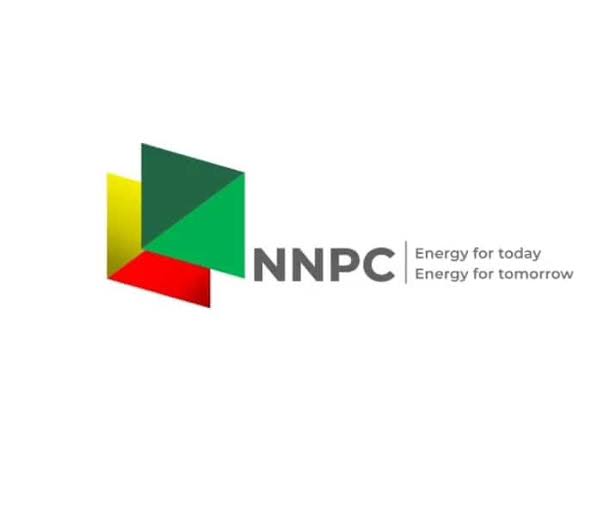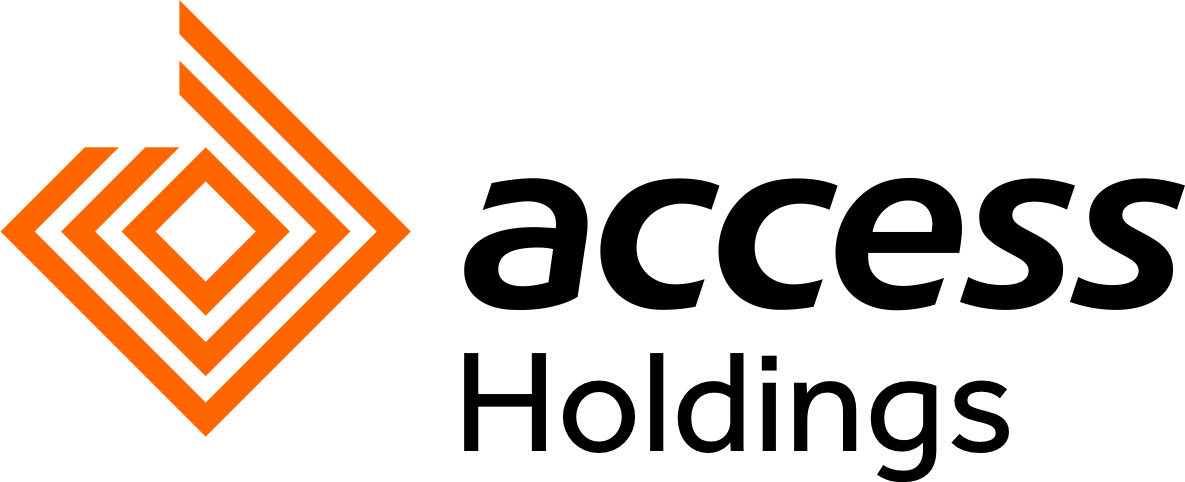
alexsl Back to School Along with esteemed industry colleagues, Rosenwald and Brochin, 1 I teach "Global Value Investing" to the MBA students at NYU Stern School of Business in the fall semester. Each one of us sees value investing through different lenses: credit opportunities, Japanese activism, and global equities. But the foundations of value investing remain the same throughout.
A special shoutout to Spencer Rolfe, a member of our investment team who serves as a TA and does most of the heavy lifting. 2 To give the students practical experience, the class manages a small portion of the university endowment. Their mid-term exam is a group project in which they make recommendations to buy, sell or hold existing positions; implementation is determined by student voting.
For the final exam, each student must prepare a "buy" recommendation, incorporating value investing principles, and pitch their idea for inclusion in the endowment's portfolio. The top three submissions are presented to an oversight committee as the final arbiter. The objective of the class is to provide the students with a disciplined and process-driven value investing approach.
As a guideline, we teach students that value investing begins with a rubric based on the answers to four essential questions: Is this a good business? Is there a margin of safety? Is there an alignment of interests between company management and investors? Is there a good track record of capital allocation? A topic discussed in the class is whether value investing is dead given the dramatic growth of passive index investing. Clearly, the students' outperformance over nearly twelve years gives us hope. 3 My perspective is that credit opportunities reflect one forum to practice value investing principles.
Repeating Warren Buffet, "Price is what you pay; value is what you get." Value earns out when assets and/or cash flow are realized (but, in equities, this can take a long time to be reflected by the market). In fixed income, value earning out should be straightforward with payment of scheduled coupons and repayment of principal at the stated maturity.
Maturity is the "day of reckoning." Of course, the potential for capital appreciation may also occur should events cause early repayment of debt and/or spread tightening. Excess High Yield Spread Over Investment Grade (Monthly 9/20/00 through 9/30/24) 4 As we have discussed in prior letters, valuations remain rich .
High yield bonds' yield advantage over investment grade bonds is at very low levels, reminiscent of the 2005-07 period. As illustrated by the table above, the difference in yield pick-up between the lowest quality segment of investment grade (BBB) and the highest quality segment of high yield ('BB') has been greater 70% of the time regardless of maturity. In other words, the spread between BBB and BB bonds was tighter only 30% of the time, based on month-end levels, over the last 24 years.
Similarly, the pick-up in yield, moving one notch further down in credit quality to B, was higher approximately 90% of the time for 1-3 year and 5-7 year maturities. That is to say that the difference in credit spread between BBB and B-rated bonds is in the lowest decile. Consequently, our portfolios are leaning into higher quality credit.
Credit Migration 5 Following the severe credit deterioration experienced during COVID, the strengthening US economy has generated positive net credit migration, the difference between the dollar volume of Rising Stars and that of Fallen Angels. 6 However, Jared Bernstein, Chairman of the U.S.
Council of Economic Advisors, once said, "Expansions don't die of old age: They're murdered by bubbles, central-bank mistakes or some unforeseen shock to the economy's supply...
and/or demand...
" 7 The jury is out as to whether we will have a "soft landing", "hard landing" or no landing. Regardless, we have conviction that net credit migration is likely to turn negative (especially if you consider the direct lending market). Boeing ( BA ) Looming over the bond market is Boeing and rating agencies' statements that they may be compelled to downgrade Boeing's credit rating to junk.
8 With $52 bn in long-term debt, Boeing would be the largest fallen angel in U.S. history.
Once a revered national champion, Boeing plead guilty 9 to criminal charges related to the well-documented crashes of the 737 MAX jet. 10 The company's failures go beyond the MAX. Two American astronauts remain stranded on the International Space Station because Boeing's Starliner was deemed to be structurally unsafe, posing too much risk to be used to return the astronauts to Earth.
Credit market participants have been wary. The graph above shows that changes in Boeing's Altman Z-score, 11 a measure of default probability, has paralleled the decline in Boeing's share price. Out of concern regarding a future downgrade into high yield, buyers of Boeing's newly issued debt have been requiring, since 2020, that the coupon increase based on steps down in credit quality.
12 Boeing has recruited an aerospace industry star CEO and is attempting to stave off a downgrade by issuing equity and other junior securities. 13 At the time of this writing J.P.
Morgan is recommending that long term investors "overweight the Boeing credit...
Near term expect volatility." 14 Nevertheless, Boeing is a business that fails our value investing rubric and, as disciplined investors, we don't suffer FOMO . 15 Another Credit that Fails our Discipline (so in this case we shorted it) Walgreens (W BA ) Walgreens Boots Alliance (W BA ) is a good example of another credit that does not measure up to our value investing principles.
In anticipation of further credit deterioration, the RiverPark Strategic Income Fund is short the company's 3.2% Senior Unsecured Bonds due April 15, 2030. 16 The company is the nearly ubiquitous operator of retail pharmacies and other healthcare businesses with approximately 13,000 locations across the U.
S., Europe, and Latin America. Deterioration in consumer spending and pharmacy reimbursement trends have pressured the company's top-line and margins, leading Moody's and S&P to downgrade the credit from investment grade to B1/BB in July 2024 and causing nearly $9 bn of debt to be added to the high yield index.
In August, Walgreens issued its first high yield bond, a $750 mm senior unsecured bond due August 2029 priced at an issuance spread of 430 bps. Rubric Analysis Is It a Good Business? The retail pharmacy business consists of two verticals: 1) "front of house" sales of general merchandise and 2) fulfillment of prescriptions. The retail business has high fixed costs with little pricing power and is plagued by direct-to-consumer competition and shoplifting.
Walgreens and all other pharmacies are generally price takers with little ability to push back against reimbursement pressures by PBMs, Medicare and Medicaid. 17 In general, these are not qualities of good businesses. Is There a Margin of Safety? Walgreens bonds may look cheap relative to historic trading levels, but this may not be so given large adjustments to reported metrics.
We believe "cash is king" and over the last three years free cash flow has declined from nearly $2.2 bn to a loss of $363 mm. The company's capital structure includes nearly $5 bn of debt maturing within two years, increasing reliance on non-core asset sales, sale leaseback transactions, and accommodative capital markets to address its obligations, thus lowering the perceived margin of safety.
In addition to funded debt, the company is also responsible for $6.6 bn in opioid liabilities. Is There Alignment of Interests? Stefano Pessina is the Executive Chairman and largest shareholder of Walgreens, owning nearly 17% of the shares outstanding.
Equity investors are arguably aligned with Pessina as his incentive to increase a material component of his net worth will bring them along for the ride. Bondholders, however, may find themselves misaligned with the equity as the company is likely to come back to the market repeatedly to refinance maturing debt while credit quality deteriorates further. Is There a Good Track Record of Capital Allocation? Over the last five years, Walgreens generated more than $10 bn in cumulative free cash flow, about 100% of which was returned to shareholders via dividends and share buybacks.
Additionally, Walgreens allocated more than $12 bn in capital to acquisitions funded via asset sales and sale leasebacks. Walgreens has taken large impairments on these acquisitions and now has fewer hard assets. 18 Not so good for bondholders.
Mutual Fund Selected Characteristics 19 The table above profiles our funds at quarter-end. In the current environment, we continue to pursue four main themes: 1) Floating rate debt - continuing to take advantage of the inverted yield curve 2) Foreign issuers - better credit characteristics with higher yields than U.S.
counterparts 3) Event-driven debt - catalysts hold potential for higher rates of return 4) Higher credit quality issuers - leaning into investment grade opportunities Credits That Measured Up (purchased in 3Q24) Audacy Inc. Audacy Inc. ( OTCPK:AUDAQ ), formerly Entercom Communications, is the second largest radio broadcasting company in the U.
S. by revenues reaching over 118 million listeners. The impact of COVID-19, the decline in radio ad-spend, and higher interest rates, made it difficult to refinance its debt.
Audacy filed a pre-packaged Chapter 11 plan of reorganization in January 2024 through which it reduced debt by $1.6 bn, emerging from bankruptcy in September 2024. Rubric Analysis: Is It a Good Business? As a terrestrial radio broadcaster in local and national ad markets, Audacy generates revenues by selling advertising time on their channels.
Listenership for traditional radio is in secular decline due to market disruptors including Spotify, Apple Music, and SiriusXM. Although revenue is falling 1-2% per year, that fact alone does not mean that radio is a bad business. Radio broadcasting is a capital-lite business requiring minimal annual capital expenditures once a station is built.
The variable costs of content are based on the songs played at the station, not on audience reach. This makes radio a cheap medium. Although the advertising business is cyclical, radio is less elastic 20 and is buffered by high cash margins.
Regardless, to withstand the cyclical ups and downs operators should maintain conservative balance sheets with low leverage. 21 Is There a Margin of Safety? Post-bankruptcy, we estimate Audacy will have net debt of approximately $310 mm, or 48% loan-to-value against their mid-point reorganization enterprise value of $650 mm. 22 Audacy's long-term debt is split into two tranches: 1) a SOFR 23 + 700 bp $25 mm First-Out Exit Term Loan due 2028 24 with 0.
9x leverage and 2) a SOFR+600 bp $225 mm Second-Out Exit Term Loan due 2029 25 with 2.5x leverage. 26 CrossingBridge purchased pre-petition bank debt 27 at a substantial discount to face value in the weeks following Audacy's bankruptcy filing and joined the Ad-Hoc Group of Term Lenders.
In addition, we worked with a broker to purchase the First Out Exit Term Loan on a "when issued" basis, settling the trade when Audacy emerged from bankruptcy in September 2024. The bankruptcy process is a cleansing experience in which the balance sheet has been repaired and a margin of safety has been re-established. Is There Alignment of Interests? Post bankruptcy, David Field will remain at the helm as CEO, backed by deep-pocketed Soros Fund Management.
David Field represents the second generation of leaders to run the radio business with roots dating back to 1968 when David's father started the business. The strong debt covenants align interests with shareholders. As a participant in both the debt and equity 28 , we are comfortable with the alignment of interests and expect to earn an appropriate return on capital.
Is There a Good Track Record of Capital Allocation? Arguably, Audacy's trip to bankruptcy court was the result of a poor capital allocation decision. The Company purchased CBS Radio at an elevated valuation, with too much debt financing, to complete the transaction. We believe the new majority shareholder, Soros Fund Management, will provide the necessary discipline to avoid previous mistakes.
M2S Group M2S Group (MSGPIN) - Familiar with the predecessor to M2S, it did not take long for us to get up to speed; this reflects the fact that if you've been around long enough, you see high yield opportunities repeat. 29 M2S is a producer of specialty coatings and chemicals used in thermal printing of labels and tags. Major customers include Amazon, Delta Airlines, FedEx, Starbucks, Dunkin Donuts, Walmart, etc.
To refinance its existing debt and fund a major acquisition, MS2 hired Jefferies to raise an $870 mm leveraged loan. In order to win the mandate, Jefferies backstopped the financing with the expectation that the "hot" leveraged loan market would accept loose financing terms and aggressive pricing. The syndication process dragged on longer than usual, causing Jefferies to feel pressure that it might have to fund the loan.
Push-back by prospective lenders resulted in improved lender protections in the credit agreement and a reduction in the offer price from 99 to 93, increasing the yield-to-maturity to over 12.00%. 30 CrossingBridge participated in the M2S Group SOFR + 475 bp $870 mm First Lien Term Loan due 8/22/31.
31 Rubric Analysis Is It a Good Business? Following the acquisition, the company became the only vertically integrated participant and remains a market leader. In addition to the cross-selling and margin benefits of vertical integration, the acquisition also provides the company with greater insight into the supply chain, demand trends, and the development of new products. Generally, labels add little to the total end-user cost, providing the company with pricing power.
At the same time, increased use of labels, especially in the foodservice, medical, and transportation markets, can have dramatic efficiency benefits. Due to systems and printer integration requirements, customer relationships tend to be long term and very "sticky." These are characteristics of a good business.
Is There a Margin of Safety? Based on historic financial results, pro forma for the acquisition, the company appears to have significant ability to repay debt via future cash flows, after scheduled debt service payments and maintenance capital expenditures. Is There Alignment of Interests? The private equity sponsor has a 25-year track record in middle-market private equity, investing $9.2 bn via six funds, giving us some level of confidence.
Since its initial acquisition, the company has used free cash flow to repay debt and the sponsor has stated its intention to continue this practice subject to growth opportunities. The strong covenant package constrains the ability of the company to increase leverage or pay dividends that would be detrimental to lenders. Is There a Good Track Record of Capital Allocation? The 2017 Chapter 11 cleansed the capital structure and allowed the company to sell unprofitable and non-core operations.
Since 2021, the company has made two transformative acquisitions that successfully accelerated growth across capabilities and end-markets. That said, as noted above, a strong set of covenants imposes limits on the company's capital allocation plans. Credit Metric Comparisons - CrossingBridge ( CB ) Nordic Core Value Positions vs US High Yield 32 CB Nordic Core Value statistics reflect dollar-weighted holdings of CrossingBridge funds - see endnote 32.
Click to enlarge Nordic Credit As discussed in prior letters, CrossingBridge funds actively invest in Nordic bonds. The $60 bn Nordic high yield market is sufficiently large and active enough to allow us to offer a stand-alone product enabling a focused exposure to what we view as an attractive asset class. On September 30, 2024, we launched the CrossingBridge Nordic High Income Bond Fund (NRDCX).
We believe the Nordic high yield market is an alternative platform for Nordic, European, and US lower middle market 33 borrowers to access public debt markets. For those interesting in learning more about the Nordic high yield bond strategy, please reach out to us. Back to School was a 1986 comedy starring Rodney Dangerfield as a wealthy but uneducated father who goes back to college with his uninspired son.
Craziness ensues, culminating in Dangerfield giving the commencement speech in which he says: "It's a jungle out there. You gotta look out for number one. But don't step in number two.
" Similarly, our number one priority is looking out for our investors; our number two priority is avoiding accidents. As we have said many times, return of capital is more important than return on principal. 34 A student of value investing, David K.
Sherman and the CrossingBridge Team Endnotes: 1 Jamie Rosenwald is Co-Founder and Portfolio Manager of Dalton Investments, a $4.3 bn global investment management firm focused on active management of long only and long/short strategies. Frank Brochin is the Chief Investment Officer of The Colony Group's Family Office Practice.
Spencer Rolfe, a member of the CrossingBridge Advisors research staff, is the Teaching Assistant for the class. 2 Joseph S. Steinberg, quoted in the diagram, is Chairman of Jefferies Financial Group and one of my business mentors.
3 Annualized performance of the student-managed portion of the portfolio, the Rosenwald Global Value Fund, was 12.54% since inception, outperforming the MSCI by 1.66% per year (11/30/12 to 6/30/24).
The Rosenwald Global Value Fund is not investable to the public. 4 Based on the option-adjusted spreads from 9/30/20 to 9/30/24 for the ICE BofA US bond indices for BBB, BB and B bonds with maturities of 1-3 years, 3-5 years, and 5-7 years. 5 Bank of America Global Research 6 Rising Stars are corporate credits that improve so that they receive ratings upgrades from high yield (BB and below) to investment grade (BBB and above).
Fallen Angels are corporate credits that deteriorate and are downgraded from investment grade to high yield. 7 Jared Bernstein in the Washington Post, July 5, 2018 8 "Junk" is a pejorative term sometimes used to describe high yield bonds. 9 In July 2024, Boeing plead guilty to criminal fraud conspiracy charges and agreed to pay a $244 mm fine to resolve a U.
S. Justice Department investigation of the two fatal 737 Max crashes. The plea deal is subject to a judge's approval and would brand the company a convicted felon.
10 For additional information, see Boeing and the Dark Age of American Manufacturing, The Atlantic, April 20, 2024 11 The Altman Z-Score is the result of a mathematical model, incorporating a company's profitability, leverage, liquidity, solvency, etc., that calculates the probability of a company's default. A score of 0 signals that the company might be headed toward bankruptcy while a score of 3 indicates a solid financial position.
The model was developed by NYU Stern School of Business Finance Professor Edward Altman in 1967. 12 Boeing Company - Thoughts on the Risk of a Downgrade to High Yield, J.P.
Morgan, October 10, 2024 13 Boeing hone $15 billion financing plan to weather crisis, sources say, Reuters, October 17, 2024 14 Boeing Company - Thoughts on Preliminary 3Q24 Results, J.P. Morgan, October 14, 2024 15 "Fear of missing out" 16 On 9/30/24, the short position in the Walgreens 3.
2% Senior Unsecured Notes due 2030 represented -0.32% of the RiverPark Strategic Income Fund. 17 For additional information, see The Powerful Companies Driving Local Drugstores Out of Business, New York Times, October 19, 2024 18 Kinnevik, a Swedish VC firm co-investing in VillageMD alongside Walgreens, announced it had fully written off its investment.
Walgreens invested more than $6 bn into VillageMD which is now in default on the $2 bn credit facility extended by Walgreens. 19 Dry powder is defined as the sum of cash, cash equivalents, pre-merger SPACs, and maturities of 90 days or less. 20 "Elasticity" refers to the price elasticity of demand defined as the sensitivity of the quantity demanded of a good or service relative to a change in its price.
In the case of radio advertising, "less elastic" means that demand for the radio advertising time does not increase or decrease significantly if pricing falls or rises. 21 Leverage is defined as total debt divided by EBITDA. EBITDA is earnings before interest, taxes, depreciation, and amortization.
22 Per Audacy's Disclosure Statement 23 Secured Overnight Offer Rate, a broad measure of the cost of borrowing cash overnight which is commonly used as the based rate for determining the interest rate on floating rate debt. 24 On 9/30/24, the holdings in the Audacy SOFR + 700 bp First Out Term Loan due 2028 represented 0.46% of the RiverPark Strategic Income Fund.
25 The exchange of the SOFR + 250 bp CBS Radio/Entercom Term Loan B2 due 2024 into the Audacy S + 600 bp Second Out Term Loan due 2029 and equity warrants was effected on 10/1/24, the day after the Audacy Plan of Reorganization went effective. As such, no CrossingBridge Funds held a position in the Audacy S + 600 bp Second Out Term Loan due 2029 on 9/30/24. 26 Leverage based on FY24E EBITDA as provided in Audacy's Disclosure Statement 27 On 9/30/24, the holdings in CBS Radio/Audacy S+250 bp Term Loan due 2024 represented 0.
18% of the RiverPark Strategic Income Fund and 0.18% of the CrossingBridge Responsible Credit Fund. 28 The exchange of the SOFR + 250 bp CBS Radio/Entercom Term Loan B2 due 2024 into the Audacy S + 600 bp Second Out Term Loan due 2029 and equity warrants was effected on 10/1/24, the day after the Audacy Plan of Reorganization went effective.
As such, no CrossingBridge Funds held a position in the Audacy equity warrants on 9/30/24. 29 The predecessor of M2S was Appvion, which filed bankruptcy in 2017. At the time, the company's business was in transition with the carbon copy paper and point-of-sale paper businesses in decline, while the thermal printing chemical business was in ramp-up stage.
In addition, the company's capital structure was problematic as the interest payments on the second lien term loan and payouts to ESOP (Employee Stock Ownership Participation) participants drained a significant portion of cash flow out of the company. CrossingBridge held a portion of the pre-petition first lien term loan. Term loan lenders, whose position converted to equity in the reorganization, received a recovery in excess of par if they held the position until the final sale of the company.
Already involved and familiar with the company, we opportunistically purchased additional post-reorg equity, capturing additional gains. On Appvion's Chapter 11 filing date, funds advised by Cohanzick Management LLC (CrossingBridge's predecessor) held, in aggregate, $6.55 mm of the Appvion First Lien Term Loan due 6/28/19.
30 Jefferies-Led Bank Group Loses $15 Million Underwriting M2S Loan, Bloomberg, August 22, 2024 31 On 9/30/24, holdings in M2S S + 475 bp Secured Term Loan due 2031 represented 1.77% of the RiverPark Strategic Income Fund and 1.37% of the CrossingBridge Responsible Credit Fund.
32 Credit metrics and yield per turn of leverage for CrossingBridge Nordic Core Value Positions reflect 30 dollar-weighted Nordic positions, aggregating $211.8 mm in market value, held in CrossingBridge portfolios as of 9/30/24 excluding short term and investment grade bonds (4 positions with market value of $39.5 mm as of 9/30/24) and stressed/distressed credit opportunities (11 positions with market value of $33.
1 mm as of 9/30/24). Leverage statistics and yield per turn of leverage for the CrossingBridge Nordic Core Value Positions are based on the latest available information as of 9/30/24. Leverage statistics and yield per turn of leverage for U.
S. bond markets reflect 9/30/24 values for the ICE BofA US BB and B bond indices. Loan leverage statistics are from the Morningstar Leveraged Loan Index and reflect averages as of 6/30/24.
Yield for the Leveraged Loan Index is as of 9/30/24. 33 Lower Middle Market is defined as Borrowers with Enterprise Values below $500 mm. Middle Market is defined as Borrowers with Enterprise Values between $500 mm and $2.
5 bn. 34 It is unclear whether this sentiment originated with the writer Mark Twain, cowboy star and humorist Will Rogers, or someone else, but it has been echoed by Graham & Dodd and Warren Buffett. SEC Yields as of 9/30/24 (Subsidized/Unsubsidized): CrossingBridge Low Duration High Yield Fund ( CBLDX ): 7.
77%/7.77% CrossingBridge Ultra-Short Duration Fund ( CBUDX ): 5.80%/5.
76% CrossingBridge Responsible Credit Fund ( CBRDX ): 8.14%/7.48% RiverPark Strategic Income Fund ( RSIIX ): 8.
06%/8.06% RiverPark Strategic Income Fund ( RSIVX ): 7.81%/7.
81% THE PROSPECTUS FOR THE CROSSINGBRIDGE Low duration high Income FUND, CROSSINGBRIDGE Ultra-Short duration FUND, CrossingBridge Responsible Credit Fund and Strategic income Fund CAN BE FOUND BY CLICKING HERE. THE STATEMENT OF ADDITONAL INFORMATION (SAI) CAN BE FOUND BY CLICKING HERE. TO OBTAIN A HARDCOPY OF THE PROSPECTUS, CALL 855-552-5863.
PLEASE READ AND CONSIDER THE PROSPECTUS CAREFULLY BEFORE INVESTING.THE PROSPECTUS FOR THE CROSSINGBRIDGE NOrdic High Income Bond Fund CAN BE FOUND BY CLICKING HERE. The Statement of additonal information (SAI) can be found by clicking here.
TO OBTAIN A HARDCOPY OF THE PROSPECTUS, CALL 855-552-5863. PLEASE READ AND CONSIDER THE PROSPECTUS CAREFULLY BEFORE INVESTING.THE PROSPECTUS FOR THE CROSSINGBRIDGE Pre-Merger SPAC ETF CAN BE FOUND BY CLICKING HERE.
The Statement of additonal information (SAI) can be found by clicking here. TO OBTAIN A HARDCOPY OF THE PROSPECTUS, CALL 855-552-5863. PLEASE READ AND CONSIDER THE PROSPECTUS CAREFULLY BEFORE INVESTING.
THE FUNDs Are OFFERED ONLY TO UNITED STATES RESIDENTS, AND INFORMATION ON THIS SITE IS INTENDED ONLY FOR SUCH PERSONS. NOTHING ON THIS WEBSITE SHOULD BE CONSIDERED A SOLICITATION TO BUY OR AN OFFER TO SELL SHARES OF THE FUND IN ANY JURISDICTION WHERE THE OFFER OR SOLICITATION WOULD BE UNLAWFUL UNDER THE SECURITIES LAWS OF SUCH JURISDICTION.CrossingBridge Mutual Funds' Disclosure: MUTUAL FUND INVESTING INVOLVES RISK.
PRINCIPAL LOSS IS POSSIBLE. INVESTMENTS IN FOREIGN SECURITIES INVOLVE GREATER VOLATILITY AND POLITICAL, ECONOMIC AND CURRENCY RISKS AND DIFFERENCES IN ACCOUNTING METHODS. INVESTMENTS IN DEBT SECURITIES TYPICALLY DECREASE IN VALUE WHEN INTEREST RATES RISE.
THIS RISK IS USUALLY GREATER FOR LONGER-TERM DEBT SECURITIES. INVESTMENT IN LOWER-RATED AND NON-RATED SECURITIES PRESENTS A GREATER RISK OF LOSS TO PRINCIPAL AND INTEREST THAN HIGHER-RATED SECURITIES. BECAUSE THE FUND MAY INVEST IN ETFS AND ETNS, THEY ARE SUBJECT TO ADDITIONAL RISKS THAT DO NOT APPLY TO CONVENTIONAL MUTUAL FUND, INCLUDING THE RISKS THAT THE MARKET PRICE OF AN ETF'S AND ETN'S SHARES MAY TRADE AT A DISCOUNT TO ITS NET ASSET VALUE ("NAV"), AN ACTIVE SECONDARY TRADING MARKET MAY NOT DEVELOP OR BE MAINTAINED, OR TRADING MAY BE HALTED BY THE EXCHANGE IN WHICH THEY TRADE, WHICH MAY IMPACT A FUND'S ABILITY TO SELL ITS SHARES.
THE VALUE OF ETN'S MAY BE INFLUENCED BY THE LEVEL OF SUPPLY AND DEMAND FOR THE ETN, VOLATILITY AND LACK OF LIQUIDITY. THE FUND MAY INVEST IN DERIVATIVE SECURITIES, WHICH DERIVE THEIR PERFORMANCE FROM THE PERFORMANCE OF AN UNDERLYING ASSET, INDEX, INTEREST RATE OR CURRENCY EXCHANGE RATE. DERIVATIVES CAN BE VOLATILE AND INVOLVE VARIOUS TYPES AND DEGREES OF RISKS, AND, DEPENDING UPON THE CHARACTERISTICS OF A PARTICULAR DERIVATIVE, SUDDENLY CAN BECOME ILLIQUID.
INVESTMENTS IN ASSET BACKED, MORTGAGE BACKED, AND COLLATERALIZED MORTGAGE BACKED SECURITIES INCLUDE ADDITIONAL RISKS THAT INVESTORS SHOULD BE AWARE OF SUCH AS CREDIT RISK, PREPAYMENT RISK, POSSIBLE ILLIQUIDITY AND DEFAULT, AS WELL AS INCREASED SUSCEPTIBILITY TO ADVERSE ECONOMIC DEVELOPMENTS. INVESTING IN COMMODITIES MAY SUBJECT THE FUND TO GREATER RISKS AND VOLATILITY AS COMMODITY PRICES MAY BE INFLUENCED BY A VARIETY OF FACTORS INCLUDING UNFAVORABLE WEATHER, ENVIRONMENTAL FACTORS, AND CHANGES IN GOVERNMENT REGULATIONS. SHARES OF CLOSED-END FUND FREQUENTLY TRADE AT A PRICE PER SHARE THAT IS LESS THAN THE NAV PER SHARE.
THERE CAN BE NO ASSURANCE THAT THE MARKET DISCOUNT ON SHARES OF ANY CLOSED-END FUND PURCHASED BY THE FUND WILL EVER DECREASE OR THAT WHEN THE FUND SEEK TO SELL SHARES OF A CLOSED-END FUND IT CAN RECEIVE THE NAV OF THOSE SHARES. THERE ARE GREATER RISKS INVOLVED IN INVESTING IN SECURITIES WITH LIMITED MARKET LIQUIDITY.CrossingBridge Pre-Merger SPAC ETF Disclosure: Investing involves risk; Principal loss is possible.
The Fund invests in equity securities and warrants of SPACs. Pre-combination SPACs have no operating history or ongoing business other than seeking Combinations, and the value of their securities is particularly dependent on the ability of the entity's management to identify and complete a profitable Combination. There is no guarantee that the SPACs in which the Fund invests will complete a Combination or that any Combination that is completed will be profitable.
Unless and until a Combination is completed, a SPAC generally invests its assets in U.S. government securities, money market securities, and cash.
Public stockholders of SPACs may not be afforded a meaningful opportunity to vote on a proposed initial Combination because certain stockholders, including stockholders affiliated with the management of the SPAC, may have sufficient voting power, and a financial incentive, to approve such a transaction without support from public stockholders. As a result, a SPAC may complete a Combination even though a majority of its public stockholders do not support such a Combination. Some SPACs may pursue Combinations only within certain industries or regions, which may increase the volatility of their prices.
The Fund may invest in SPACs domiciled or listed outside of the U.S., including, but not limited to, Canada, the Cayman Islands, Bermuda and the Virgin Islands.
Investments in SPACs domiciled or listed outside of the U.S. may involve risks not generally associated with investments in the securities of U.
S. SPACs, such as risks relating to political, social, and economic developments abroad and differences between U.S.
and foreign regulatory requirements and market practices. Further, tax treatment may differ from U.S.
SPACs and securities may be subject to foreign withholding taxes. Smaller capitalization SPACs will have a more limited pool of companies with which they can pursue a business combination relative to larger capitalization companies. That may make it more difficult for a small capitalization SPAC to consummate a business combination.
Because the Fund is non-diversified it may invest a greater percentage of its assets in the securities of a single issuer or a smaller number of issuers than if it were a diversified fund. As a result, a decline in the value of an investment in a single issuer could cause the Fund's overall value to decline to a greater degree than if the Fund held a more diversified portfolio.DEFINITIONS: THE S&P 500, OR SIMPLY THE S&P, IS A STOCK MARKET INDEX THAT MEASURES THE STOCK PERFORMANCE OF 500 LARGE COMPANIES LISTED ON STOCK EXCHANGES IN THE UNITED STATES.
THE ICE BOFA INVESTMENT GRADE INDEX TRACKS THE PERFORMANCE OF US DOLLAR DENOMINATED INVESTMENT GRADE RATED CORPORATE DEBT PUBLICALLY ISSUED IN THE US DOMESTIC MARKET. THE ICE BOFA HIGH YIELD INDEX TRACKS THE PERFORMANCE OF US DOLLAR DENOMINATED BELOW INVESTMENT GRADE RATED CORPORATE DEBT PUBLICALLY ISSUED IN THE US DOMESTIC MARKET. EBITDA IS A COMPANY'S EARNINGS BEFORE INTEREST, TAXES, DEPRECIATION, AND AMORTIZATION IS AN ACCOUNTING MEASURE CALCULATED USING A COMPANY'S EARNINGS, BEFORE INTEREST EXPENSES, TAXES, DEPRECIATION, AND AMORTIZATION ARE SUBTRACTED, AS A PROXY FOR A COMPANY'S CURRENT OPERATING PROFITABILITY.
A BASIS POINT ( BP ) IS 1/100 OF ONE PERCENT. PARI-PASSU IS A LATIN TERM THAT MEANS 'ON EQUAL FOOTING' OR 'RANKING EQUALLY'. IT IS AN IMPORTANT CLAUSE FOR CREDITORS OF A COMPANY IN FINANCIAL DIFFICULTY WHICH MIGHT BECOME INSOLVENT.
IF THE COMPANY'S DEBTS ARE PARI PASSU, THEY ARE ALL RANKED EQUALLY, SO THE COMPANY PAYS EACH CREDITOR THE SAME AMOUNT IN INSOLVENCY. LIBOR IS THE AVERAGE INTERBANK INTEREST RATE AT WHICH A SELECTION OF BANKS ON THE LONDON MONEY MARKET ARE PREPARED TO LEND TO ONE ANOTHER. YIELD TO MATURITY (YTM) IS THE TOTAL RETURN ANTICIPATED ON A BOND (ON AN ANNUALIZED BASIS) IF THE BOND IS HELD UNTIL IT MATURES.
FREE CASH FLOW ( FCF ) IS THE CASH A COMPANY PRODUCES THROUGH ITS OPERATIONS, LESS THE COST OF EXPENDITURES ON ASSETS. IN OTHER WORDS, FREE CASH FLOW IS THE CASH LEFT OVER AFTER A COMPANY PAYS FOR ITS OPERATING EXPENSES AND CAPITAL EXPENDITURES. DURATION IS A MEASURE OF THE SENSITIVITY OF THE PRICE OF A BOND OR OTHER DEBT INSTRUMENT TO A CHANGE IN INTEREST RATES.
DEBTOR-IN-POSSESSION (DIP) FINANCING IS IS A SPECIAL KIND OF FINANCING MEANT FOR COMPANIES THAT ARE IN BANKRUPTCY. ONLY COMPANIES THAT HAVE FILED FOR BANKRUPTCY PROTECTION UNDER CHAPTER 11 ARE ALLOWED TO ACCESS DIP FINANCING, WHICH USUALLY HAPPENS AT THE START OF A FILING. DIP FINANCING IS USED TO FACILITATE THE REORGANIZATION OF A DEBTOR-IN-POSSESSION (THE STATUS OF A COMPANY THAT HAS FILED FOR BANKRUPTCY) BY ALLOWING IT TO RAISE CAPITAL TO FUND ITS OPERATIONS AS ITS BANKRUPTCY CASE RUNS ITS COURSE.
YIELD TO CALL (YTC) REFERS TO THE RETURN A BONDHOLDER RECEIVES IF THE BOND IS HELD UNTIL THE CALL DATE, WHICH OCCURS SOMETIME BEFORE IT REACHES MATURITY. The SEC yield is a standard yield calculation developed by the U.S.
Securities and Exchange Commission (SEC) that allows for fairer comparisons of bond funds. It is based on the most recent 30-day period covered by the fund's filings with the SEC. The yield figure reflects the dividends and interest earned during the period after the deduction of the fund's expenses.
It is also referred to as the "standardized yield." ETF Definitions: The ICE BofA 0-3 Year U.S.
Treasury Index tracks the performance of U.S. dollar denominated sovereign debt publicly issued by the US government in its domestic market with maturities less than three years.
Gross Spread is The amount By which a SPAC is trading at a discount or premium to its pro rata share of the collateral trust value. For example, if a SPAC is trading at $9.70 and shareholders' pro rata share of the trust account is $10.
00/share, the SPAC has a Gross Spread of 3% (trading at a 3% discount). Yield to Liquidation: Similar to a bond's Yield to Maturity, SPACs have a Yield to Liquidation/Redemption, which can be calculated using the Gross Spread and Time to Liquidation. Maturity: Similar to a bond's maturity date, SPACs also have a maturity, which is the defined time period in which they have to complete a business combination.
This is referred to as the Liquidation or Redemption Date. Price refers to the price at which the etf is currently trading. Weighted Average Life refers to the weighted average time until a portfolio of SPACs' Liqudation or redemption dates.
The SEC yield is a standard yield calculation developed by the U.S. Securities and Exchange Commission (SEC) that allows for fairer comparisons of bond funds.
It is based on the most recent 30-day period covered by the fund's filings with the SEC. The yield figure reflects the dividends and interest earned during the period after the deduction of the fund's expenses. It is also referred to as the "standardized yield.
"Fund holdings and sector allocations are subject to change and should not be considered recommendations to buy or sell any security. ANY DIRECT OR INDIRECT REFERENCE TO SPECIFIC SECURITIES, SECTORS, OR STRATEGIES ARE PROVIDED FOR ILLUSTRATIVE PURPOSES ONLY. When Pertaining to Commentaries posted by crossingbridge, it REPRESENTS THE PORTFOLIO MANAGER'S OPINION AND IS AN ASSESSMENT OF THE MARKET ENVIRONMENT AT A SPECIFIC TIME AND IS NOT INTENDED TO BE A FORECAST OF FUTURE EVENTS OR A GUARANTEE OF FUTURE RESULTS.
THIS INFORMATION SHOULD NOT BE RELIED UPON BY THE READER AS RESEARCH OR INVESTMENT ADVICE REGARDING THE FUND OR ANY SECURITY IN PARTICULAR. SPECIFIC PERFORMANCE OF ANY security MENTIONED IS AVAILABLE UPON REQUEST. Any performance data quoted represents past performance.
Past performance does not guarantee future results. The investment return and principal value of an investment will fluctuate so that an investor's shares, when redeemed, may be worth more or less than their original cost. Current performance may be lower or higher than the performance quoted.
Performance data current to the most recent month end may be obtained by calling 914-741-1515. Please Find the Most Current standardized performance For Each Fund as of the most recent quarter-end By clicking the following links: CrossingBridge Low Duration High Yield Fund, CrossingBridge Ultra-Short Duration Fund, CrossingBridge Responsible Credit Fund, riverpark strategic income fund, CrossingBridge Pre-Merger SPAC ETF. All performance data greater than 1 year is annualized.
DIVERSIFICATION DOES NOT ASSURE A PROFIT NOR PROTECT AGAINST LOSS IN A DECLINING MARKET.A STOCK IS A TYPE OF SECURITY THAT SIGNIFIES OWNERSHIP IN A CORPORATION AND REPRESENTS A CLAIM ON PART OF THE CORPORATION'S ASSETS AND EARNINGS. A BOND IS A DEBT INVESTMENT IN WHICH AN INVESTOR LOANS MONEY TO AN ENTITY THAT BORROWS THE FUND FOR A DEFINED PERIOD OF TIME AT A FIXED INTEREST RATE.
A STOCK MAY TRADE WITH MORE OR LESS LIQUIDITY THAN A BOND DEPENDING ON THE NUMBER OF SHARES AND BONDS OUTSTANDING, THE SIZE OF THE COMPANY, AND THE DEMAND FOR THE SECURITIES. THE SECURITIES AND EXCHANGE COMMISSION (SEC) DOES NOT APPROVE, ENDORSE, NOR INDEMNIFY ANY SECURITY. Duration is a measure of the sensitivity of the price of a bond or other debt instrument to a change in interest rates.
TAX FEATURES MAY VARY BASED ON PERSONAL CIRCUMSTANCES. CONSULT A TAX PROFESSIONAL FOR ADDITIONAL INFORMATION.Crossingbridge advisors, LLC is the Adviser to The CrossingBridge ultra-short duration fund, the crossingbridge low duration high yield fund, the crossingbridge Responsible credit fund and the riverpark strategic income fund which are distributed by QUASAR DISTRIBUTORS, LLC.
CrossingBridge ADvisors, LLC is the ADviser to the crossingbridge Pre-merger Spac ETF, which is distributed by Foreside Fund Services, LLC. Click to enlarge Original Post Editor's Note: The summary bullets for this article were chosen by Seeking Alpha editors. Editor's Note: This article discusses one or more securities that do not trade on a major U.
S. exchange. Please be aware of the risks associated with these stocks.
.














